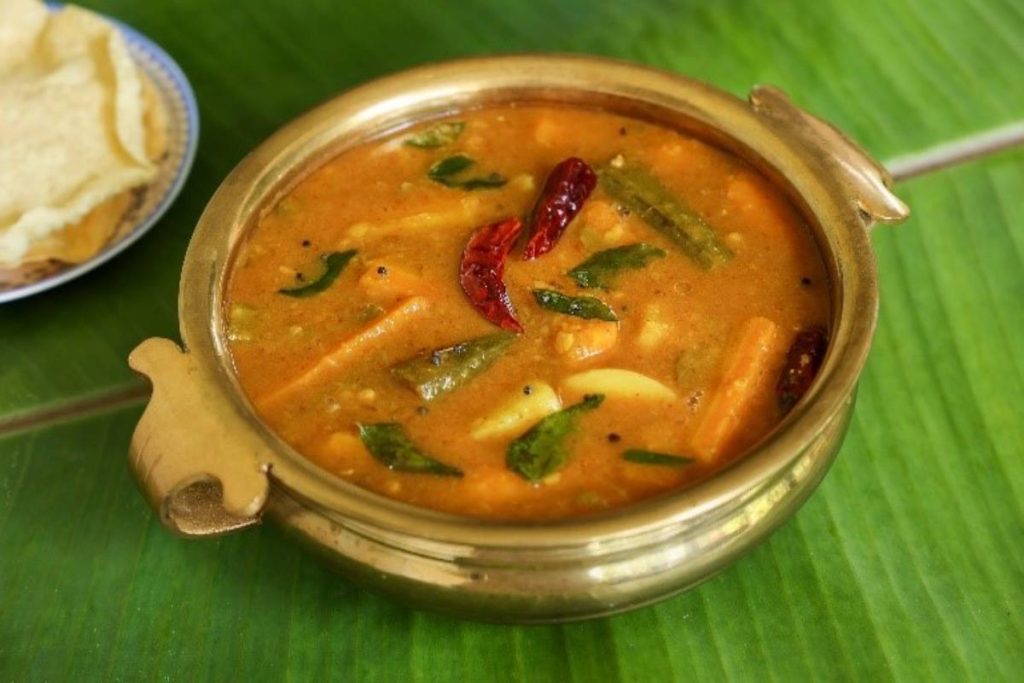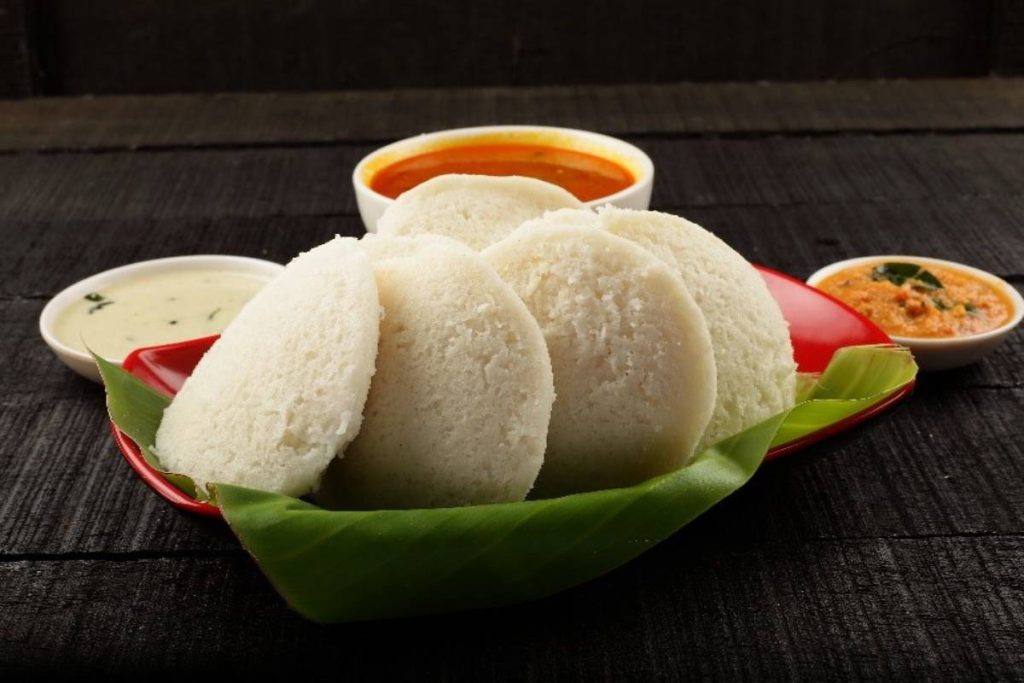If you have not had the chance to savor the South Indian dishes then this blog will introduce you to mouth-watering dishes, a brief history of this cuisine and a few recipes for the cooking enthusiasts. While writing this post and looking at the pictures, my mouth was watering and hope that the readers of this blog will get the same experience. Popular South Indian dishes include dosa, idli, vada, sambar, rasam, pongal, and biryani
In December 2023, a South Indian restaurant opened in our neighborhood, named Mayuri (Mayuri means female Peacock). On one of the days during holiday break, I had lunch at Mayuri. I would venture to say that Dosa tops the choice of all other delicacies. Since, that visit to a South Indian restaurant was after a number of years, I ordered Dosa with Sambar, and that palate experience was of contentment. I have visited Mayuri a few times since then, savoring different dish each time and the experience has been quite good. While writing this blog and looking at the pictures, my mouth was watering and hope that the readers of this blog will get the same experience.
My earliest memory of South Indian cuisine goes back fifty years ago while I was studying in an Engineering College in Panjab, India.
After migrating to US, I have had the opportunity to come across South Indian restaurants occasionally, meaning not available at a whim. From delicious main course meals to quick breakfast dishes, south Indian cuisine is loved, not only in India but worldwide. From the road-side cooking stalls to the fine dining restaurants, South Indian cuisine is famous for its distinctive flavors and sweet-savory taste. These flavors have been catered for generations. Spices like tamarind, pepper, curry leaves, and garlic are heavily used in the dishes. The cuisine has its origins over 4500 years ago, in the Dravidian culture. It is influenced by dishes from Tamil Nadu, Telangana, Kerala, Andhra Pradesh, Karnataka states, commonly termed as South India.
Although this cuisine was fixated in the Indian southern region for many centuries, with the advent of time, it started to branch out in Indian sub-continent and now it has spread throughout all the continents. South Indian dishes are cooked with rice, lentils, coconut, and spices. As with most countries, there are large regional differences and each state’s cuisine can vary greatly even within a specific state. Some of the food dishes prepared in this region have similarities, but there are variations, as well.
South India has a hot and humid climate. Rainfall is abundant and so is the supply of fresh fruit, vegetables, and rice. Andhra Pradesh produces fiery Andhra cuisine which is largely vegetarian yet has a huge range of seafood in its coastal areas. Tamilnadu has Chettinad cuisine, perhaps the fieriest of all Indian food. This style too is largely vegetarian
Dear reader, if you are interested to savor South Indian food, you can reach out to T3G i.e., The Great Guru Google to locate a nearby restaurant. Well, if the nearby restaurant is not at a drivable distance and if you are a cooking enthusiast and would like to prepare these dishes yourself then you can reach out to T2AG i.e., The Amazing Amazon Guru. You can order the recipe materials listed below and have fun cooking. Making chutneys is kind of laborious, so I suggest ordering them from T2AG.
Below are basic recipes of most common dishes. As is the case with any dish, variation in ingredients can be experimented with and baselined with one’s own taste
Masala Dosa Recipe

Dosa is a thin, crispy pancake made from fermented rice and lentil batter. It is usually served with coconut chutney and samba that is a spicy lentil soup with vegetables.
Ingredients:
– 1 cup rice
– 1/4 cup urad dal (split black gram)
– 1/4 cup chana dal (split Bengal gram)
– 1/4 cup poha (flattened rice)
– 1/4 teaspoon fenugreek seeds
– Salt to taste
– Oil for cooking
For the masala filling:
– 2 medium-sized potatoes, boiled and mashed
– 1 onion, finely chopped
– 1 green chili, finely chopped
– 1/2 teaspoon mustard seeds
– 1/2 teaspoon cumin seeds
– A pinch of asafoetida (hing)
– Curry leaves
– Salt to taste
– Oil for cooking
Instructions:
- Wash the rice, urad dal, chana dal, and fenugreek seeds together and soak them in water for about 4-5 hours.
- Wash the poha and soak it separately for about 4-5 hours.
- After soaking, drain the water from the rice, dal, and fenugreek seeds mixture. Grind them together in a blender, adding water gradually to make a smooth batter.
- Drain the water from the soaked poha and add it to the blender. Blend again until well combined.
- Transfer the batter to a large bowl and add salt. Mix well and let it ferment overnight or for at least 8 hours.
- For the masala filling, heat oil in a pan and add mustard seeds. Once they start spluttering, add cumin seeds, asafoetida, and curry leaves.
- Add chopped onions and green chili. Sauté until the onions turn translucent.
- Add the mashed potatoes and salt. Mix well and cook for a few minutes. Remove from heat and keep aside.
- Heat a non-stick dosa tawa or griddle. Pour a ladleful of batter onto the center of the tawa and spread it in a circular motion to make a thin dosa.
- Drizzle some oil around the edges of the dosa and cook on medium heat until the bottom turns golden brown.
- Flip the dosa and cook the other side for a minute or two.
- Place a portion of the masala filling in the center of the dosa and fold it from both sides to form a roll.
- Serve hot with coconut chutney and sambar.
Enjoy your delicious masala dosa! Let me know if you need any more recipes or cooking tips.
Sambar Recipe

Sambar is a spicy lentil soup made with Toor dal, tamarind, and a variety of vegetables. It is flavored with a blend of spices and is often served with rice or as a side dish for dosa and idli.
Ingredients:
– 1 cup Toor dal (split pigeon peas)
– 1 small onion, finely chopped
– 1 small tomato, finely chopped
– 1 small carrot, chopped
– 1 small potato, chopped
– 1 drumstick, chopped (optional)
– 1/4 cup tamarind pulp
– 2 tablespoons sambar powder
– 1/2 teaspoon turmeric powder
– Salt to taste
– Water as needed
– For tempering:
– 2 tablespoons oil
– 1 teaspoon mustard seeds
– 1 teaspoon cumin seeds
– 1/2 teaspoon fenugreek seeds
– 2 dried red chilies
– A few curry leaves
Instructions:
- Wash the Toor dal and pressure cook it with two cups of water until soft and mushy.
- In a separate pan, heat oil and add mustard seeds, cumin seeds, fenugreek seeds, dried red chilies, and curry leaves. Let them splutter.
- Add chopped onions and sauté until they turn translucent.
- Add chopped tomatoes and cook until they become soft.
- Add chopped carrots, potatoes, and drumstick (if using) and sauté for a few minutes.
- Add tamarind pulp, sambar powder, turmeric powder, and salt. Mix well.
- Add water as needed to achieve the desired consistency. Bring it to a boil and let it simmer for 10-15 minutes until the vegetables are cooked.
- Mash the cooked Toor dal and add it to the sambar. Mix well and let it simmer for another 5 minutes.
- Serve hot with dosa or rice.
Idli Recipe

Idli is a steamed rice cake made from fermented rice and lentil batter. It is soft and fluffy in texture and is often served with coconut chutney and sambar.
– 1 cup idli rice
– 1/4 cup urad dal (split black gram)
– 1/2 teaspoon fenugreek seeds
– Salt to taste
Instructions:
- Wash the idli rice, urad dal, and fenugreek seeds separately and soak them in water for about 4-5 hours.
- Drain the water and grind the soaked rice and dal separately to a smooth paste using a blender or grinder. Add water as needed to achieve a thick, smooth consistency.
- Mix the rice and dal batter together in a large bowl. Add salt to taste and mix well.
- Cover the bowl with a lid or plastic wrap and let the batter ferment overnight or for at least 8 hours in a warm place.
- After fermentation, the batter will rise and become fluffy.
- Grease the idli molds with oil or ghee and pour the batter into each mold, filling it about 3/4th full.
- Steam the idlis in a steamer for about 10-12 minutes or until a toothpick inserted into the center comes out clean.
- Once cooked, remove the idlis from the molds using a spoon or knife.
- Serve hot with sambar, coconut chutney, or any other accompaniment of your choice.
Vada Recipe

Vada is a deep-fried savory fritter made from ground lentils. It is crispy on the outside and soft on the inside. Vada is typically served with coconut chutney and sambar.
Ingredients:
– 1 cup urad dal (split black gram)
– 1 small onion
– 2 green chilies
– A handful of curry leaves
– Salt to taste
Instructions:
- Soak the urad dal in water for about 4-5 hours.
- Drain the water and grind the dal into a smooth paste.
- Finely chop the onion, green chilies, and curry leaves.
- Mix the chopped ingredients into the dal paste.
- Add salt to taste and mix well.
- Heat oil in a deep pan for frying.
- Take a small portion of the dal mixture and shape it into a round vada.
- Carefully drop the vada into the hot oil and fry until golden brown.
- Remove the vada from the oil and place it on a paper towel to drain excess oil.
- Serve hot with coconut chutney or sambar.
Rasam Recipe
Ingredients:
– 1/2 cup Toor dal (split pigeon peas)
– 2 tomatoes
– 1 small onion
– 2 cloves of garlic
– 1 teaspoon tamarind paste
– 1 teaspoon rasam powder
– 1/2 teaspoon turmeric powder
– 1/2 teaspoon mustard seeds
– 1/2 teaspoon cumin seeds
– A few curry leaves
– A pinch of asafoetida
– Salt to taste
Instructions:
- Cook the Toor dal in a pressure cooker until soft and mushy. Set it aside.
- In a separate pan, heat some oil and add mustard seeds. Once they start spluttering, add cumin seeds, curry leaves, and asafoetida.
- Add chopped onions and garlic to the pan and sauté until they turn golden brown.
- Add chopped tomatoes and cook until they become soft and mushy.
- Add tamarind paste, rasam powder, turmeric powder, and salt. Mix well.
- Add water and bring the mixture to a boil. Let it simmer for a few minutes.
- Add the cooked Toor dal to the pan and mix well. Let it simmer for another 5-10 minutes.
- Serve hot with rice or as a soup.

